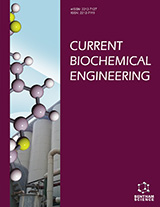Abstract
Background: Packing materials, which are used in biofiltration systems treating gaseous volatile organic compounds, are expected to have optimal water content in their actual use. This is because high volume of water increases the diffusion resistance while low water content decreases microbial activity. Therefore the thickness of the liquid layer on the packing material needs to be identified to determine the mass transfer process of target pollutants. However, it cannot be measured directly due to the complicated surface structure of general packing materials.
Methods: In this study, ideal biofiltration surfaces were prepared artificially by coating a plain membrane surface with mono-cultured biomass and a known thickness of liquid layer. The sorption velocity of gaseous toluene was then observed, within a considerable range of liquid thicknesses, on this biomass surface. The velocity of water vaporization from a porous PVF poly-vinyl formal (PVF) material was then measured. Finally, the relationship between thickness of liquid surface and the water content of the PVF material was calculated based on the experimental results and a set of mathematical models on vaporization.
Results: There is an appropriate range for the thickness of the water layer thickness on the biomass at the surface of packing material. In one case, this thickness was cited as approximately 0.1–0.2 mm for gaseous toluene. The PVF material was thought to form such a thick water layer at around 50–60% of its water content. The water content conditions that affect the formation of the water layer changed when biomass grew on the surface of the PVF material. The range declined from around 70% for new material to around 55% for biomass-rich material.
Conclusion: This study quantitatively clarified the reason why there is optimal range of water content for the packing material of biofiltration; i.e., appropriate liquid layer thickness at the surface of packing materials is built by a certain range of water content.
Keywords: Biofiltration, toluene, packing material, poly-vinyl formal (PVF), moisture control, liquid layer thickness, numerical calculation.
Graphical Abstract
[http://dx.doi.org/10.1080/10473289.1991.10466898] [PMID: 1958341]
[http://dx.doi.org/10.1007/978-94-017-0930-9]
[http://dx.doi.org/10.1080/07388550590935814] [PMID: 15999852]
[http://dx.doi.org/10.1002/jctb.2216]
[http://dx.doi.org/10.1007/s11157-012-9288-5]
[http://dx.doi.org/10.1016/j.biotechadv.2016.06.007] [PMID: 27374790]
[http://dx.doi.org/10.1016/S1385-8947(03)00052-4]
[http://dx.doi.org/10.1016/S1093-0191(01)00055-7]
[http://dx.doi.org/10.1007/s00253-005-1960-z] [PMID: 15803311]
[http://dx.doi.org/10.1016/j.jenvman.2010.01.006] [PMID: 20181422]
[http://dx.doi.org/10.1016/j.jhazmat.2011.11.068] [PMID: 22178276]
[http://dx.doi.org/10.1016/j.bej.2005.02.015]
[http://dx.doi.org/10.1590/S1516-89132006000700018]
[http://dx.doi.org/10.1016/j.cej.2009.01.045]
[http://dx.doi.org/10.1016/S0032-9592(02)00056-0]
[http://dx.doi.org/10.2166/wst.1998.0226]
[http://dx.doi.org/10.1080/10962247.2012.672396] [PMID: 22866576]
 24
24 2
2
















